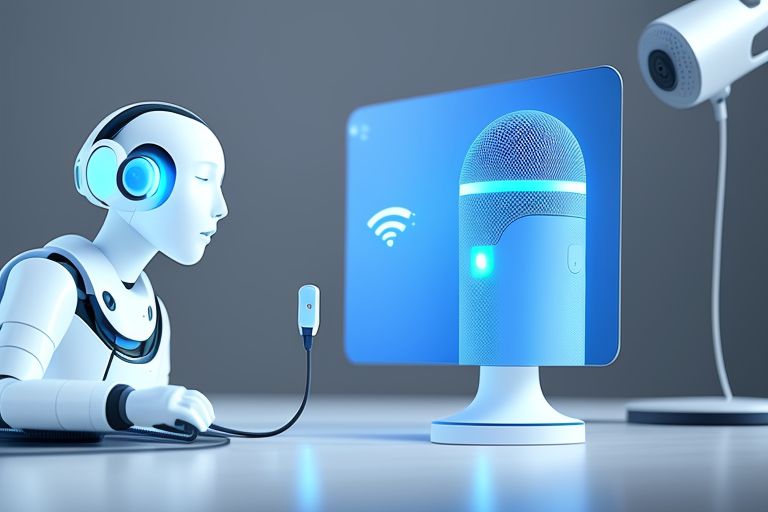Imagine having a personal assistant available 24/7, ready to respond to your queries, manage your schedule, and even control your smart home devices. Thanks to advancements in artificial intelligence, AI-powered voice assistants have become an integral part of our daily lives. From Siri to Alexa, these tools have revolutionized the way we interact with technology, making tasks faster, smarter, and more efficient. But what exactly makes these voice assistants so powerful, and how can they benefit you? Let’s dive into the world of AI-driven voice technology and explore its potential.
Understanding AI-Powered Voice Assistants
AI-powered voice assistants are software applications that use natural language processing (NLP) and machine learning to understand and respond to human commands. These tools rely on complex algorithms to interpret voice inputs, analyze context, and provide accurate responses. Whether you’re asking for the weather forecast, setting a reminder, or playing your favorite song, voice assistants are designed to make life easier.
- Natural Language Processing (NLP): This technology allows voice assistants to understand and interpret human language, enabling seamless communication.
- Machine Learning: By analyzing user interactions, voice assistants improve their accuracy and adaptability over time.
- Cloud Integration: Most voice assistants are connected to the cloud, ensuring they can access vast amounts of data for enhanced functionality.
Popular AI Voice Assistants in the Market
Several AI-powered voice assistants dominate the market, each with its unique features and capabilities. Here are some of the most widely used ones:
- Amazon Alexa: Known for its compatibility with smart home devices, Alexa can control lights, thermostats, and security systems with simple voice commands.
- Google Assistant: Integrated with Google’s ecosystem, this assistant excels in providing accurate search results, reminders, and calendar management.
- Apple Siri: A pioneer in voice technology, Siri is deeply integrated into Apple devices, offering personalized assistance for iOS users.
- Microsoft Cortana: Designed for productivity, Cortana helps users manage emails, tasks, and schedules efficiently.
How AI Voice Assistants Enhance Daily Life
The applications of AI-powered voice assistants are vast, spanning across personal, professional, and lifestyle domains. Here’s how they can transform your daily routine:
1. Smart Home Automation
Voice assistants are at the heart of smart home technology. With just a few words, you can control lighting, adjust thermostats, lock doors, and even monitor security cameras. For instance, saying, “Alexa, turn off the lights,” can instantly create a cozy ambiance without lifting a finger.
2. Improved Productivity
Busy professionals can leverage voice assistants to manage their schedules, set reminders, and complete tasks efficiently. Google Assistant, for example, can send emails, create to-do lists, and even book appointments on your behalf.
3. Hands-Free Entertainment
Whether you’re cooking, working out, or relaxing on the couch, voice assistants make entertainment effortless. Simply ask them to play your favorite playlist, podcast, or movie, and enjoy a hands-free experience.
4. Accessibility for All
Voice assistants are a game-changer for individuals with disabilities. By enabling voice-controlled navigation and communication, these tools empower users to interact with technology independently.
The Technology Behind AI Voice Assistants
AI-powered voice assistants rely on a combination of advanced technologies to function effectively. Here’s a closer look at the key components:
1. Speech Recognition
This technology converts spoken words into text by analyzing audio signals. It’s the first step in enabling voice assistants to understand user commands.
2. Natural Language Understanding (NLU)
NLU goes beyond speech recognition by interpreting the meaning and intent behind the words. This allows voice assistants to provide contextually relevant responses.
3. Voice Synthesis
Also known as text-to-speech, this technology converts written text into spoken words, enabling voice assistants to communicate back to users.
4. Continuous Learning
Through machine learning algorithms, voice assistants constantly improve their performance by learning from user interactions and feedback.
Challenges and Limitations of AI Voice Assistants
While AI-powered voice assistants offer numerous benefits, they are not without challenges. Understanding these limitations can help users make informed decisions:
1. Privacy Concerns
Voice assistants often store data in the cloud, raising concerns about data security and privacy. Users must be cautious about the information they share and review privacy settings regularly.
2. Accuracy Issues
Despite advancements in NLP, voice assistants may struggle with accents, dialects, or complex queries, leading to inaccurate responses.
3. Dependency Risks
Over-reliance on voice assistants can reduce critical thinking and problem-solving skills, especially among younger users.
Future Trends in AI Voice Technology
The future of AI-powered voice assistants is bright, with several exciting trends on the horizon:
- Emotional Intelligence: Future assistants may detect emotions through voice tone and respond empathetically.
- Multilingual Support: Enhanced language capabilities will make voice assistants more accessible to diverse populations.
- Integration with IoT: As the Internet of Things (IoT) expands, voice assistants will play a central role in connecting and managing smart devices.
Conclusion
AI-powered voice assistants have transformed the way we interact with technology, offering unparalleled convenience, efficiency, and accessibility. From automating smart homes to boosting productivity, these tools have become indispensable in our daily lives. While challenges like privacy concerns and accuracy issues persist, continuous advancements in AI technology promise an even brighter future. As you embrace these innovations, remember to use them thoughtfully and stay informed about their capabilities and limitations. The era of voice-driven technology is here—ready to make your life smarter, simpler, and more connected.












Leave a Reply